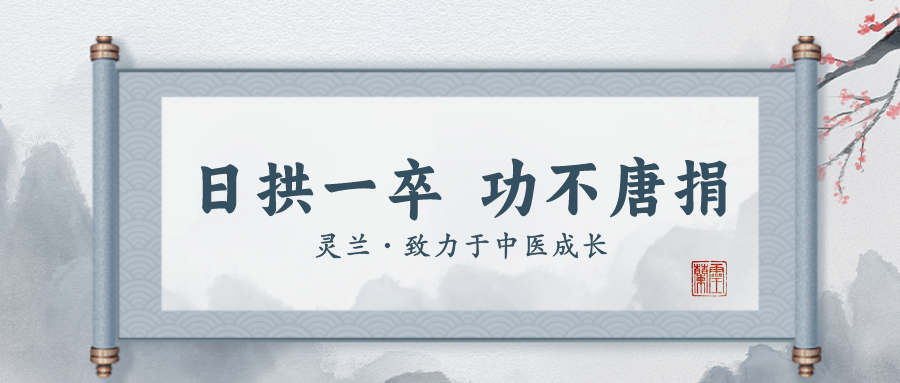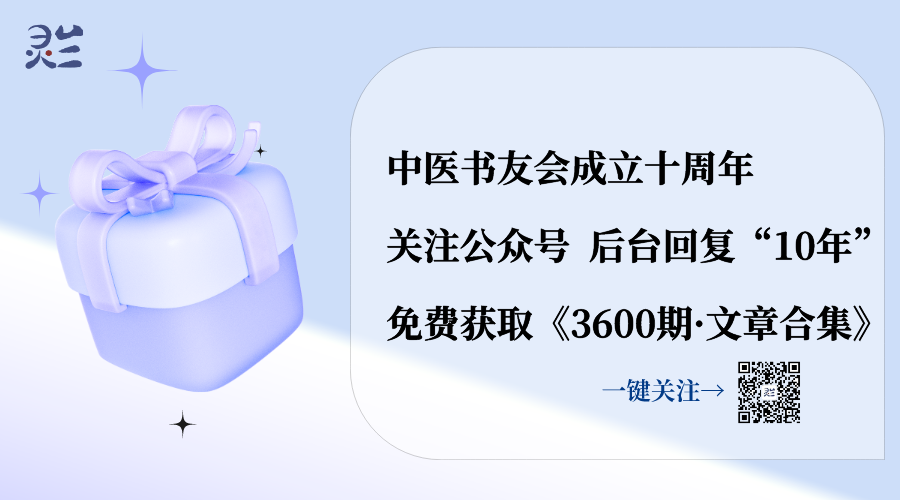

Chinese Medicine Book ClubIssue 3621One issue daily, accompanying the growth of TCM practitioners
IIntroduction: Previously, we have published the observation, listening, and inquiry diagnostics in the gynecological four diagnostic series. Today is the fourth article in this series—pulse diagnosis. This article mainly introduces twelve common pulse types and three types of intermittent pulses. Due to the special physiological states of women during menstruation, pregnancy, and childbirth, some pulse types may not necessarily indicate disease during specific periods, requiring special attention. Continuous observation and experience in clinical practice will enable better mastery and application of these pulse types. (Introduction by Yi Yi)
—This article is approximately5000words, expected reading time13minutes—

Author/XU Rongzhai
|
Biography:XU Rongzhai, courtesy name Guozhuang, later self-styled as the Elder of Three Supplements. Born in 1911, passed away in 1982, from Shaoxing, Zhejiang. He studied under the famous physician Yang Zhi’an and also sought guidance from Cao Bingzhang, analyzing doubts and questions, humbly seeking advice, and gaining deep appreciation from Mr. Cao, thus forming a friendship across generations. He was rigorous in his studies, well-read, diligent in writing, and advocated “reading thousands of volumes, writing as if inspired”. He had profound research on classical TCM texts, especially the “Neijing”. He authored works such as “Revised Popular Treatise on Febrile Diseases”, “Essentials of Gynecology”, and “Compilation of Key Points in Internal Medicine”. |
Pulse diagnosis mainly involves pulse taking, which also includes some aspects of palpation (pressing on the chest and abdomen). The precision of palpation in modern medicine is more refined than what is recorded in TCM texts, so we will focus solely on pulse diagnosis.Generally speaking, the internal gynecology pulse diagnosis is fundamentally the same, but with slight differences. For example, there are several specific pulses in gynecology (such as Xian Mai (String-like Pulse), Hua Mai (Slippery Pulse), Se Mai (Choppy Pulse), Dai Mai (Intermittent Pulse)), which due to the special physiology of women, may not necessarily indicate disease during certain periods of early pregnancy, while in internal medicine, they are considered pathological pulses.This is referred to as “differential diagnosis between men and women”. Due to the differences in diagnosis between genders, there are also some methodological differences. Generally, pulse diagnosis requires the patient to lie supine, but for patients with severe blood loss or postpartum dizziness who cannot sit up, one must use the Fu Wan Zhen (Covering Wrist Diagnosis) or Ce Wan Zhen (Side Wrist Diagnosis); the physician’s finger techniques must also adapt to the patient’s arm position and pulse position.In addition to using methods such as Ju (Lift), An (Press), Tui (Push), and Xun (Seek), other diagnostic methods must also be correspondingly employed. For example: when diagnosing early pregnant women, one must use the Yi Zhi Zhen Fa (Moving Finger Diagnosis Method), which involves first diagnosing the three positions, then slightly retreating half a step, pressing the index finger on the Cun position and the middle finger on the Guan position, then restoring the finger position to compare the strength and size of the pulse; when diagnosing patients with eclampsia, one must use the Shuang Shou Yi Fu Yi Zhen Fa (Two Hands Supporting and Diagnosing Method) to determine the pulse’s dynamic and static state; for patients with postpartum hemorrhage and severe blood loss who can only lie on their side, one must use the Wan Zhi Zhen Fa (Pulling Finger Diagnosis Method) to adapt to the patient’s arm position. Various methods should be applied as appropriate, primarily to accurately diagnose the true pulse condition.Based on my clinical observations and reflections, there are three categories of pulse differentiation that should be noted:
① Pulses that are similar and difficult to distinguish, often referred to together in ancient texts, such as Jin (Tight) vs. Xian (String-like), Hong (Surging) vs. Da (Large), Xi (Thin) vs. Xiao (Small), Ruo (Weak) vs. Xu (Deficient), Ji (Rapid) vs. Shu (Fast), Huan (Slow) vs. Chi (Delayed), Fu (Floating) vs. Chen (Deep), etc. (seven pairs of pulses);
② Pulses that are only occasionally seen in a few patients, such as Cu (Rapid), Jie (Knotted), Dai (Intermittent), and Kao (Hollow);③ Pulses that can only be discussed theoretically and are impractical, such as Chang (Long), Duan (Short), Dong (Moving), San (Scattered), Ge (Leather), Lao (Firm), etc. (six pulses).These seventeen pulse types include those that are difficult to distinguish, those that are occasionally seen, and those that are impossible to diagnose; although many are recorded in ancient pulse literature, I have rarely experienced them, especially the third category, and I certainly do not wish to embellish it with empty words.Common Twelve PulsesBelow is a brief description of the twelve common pulses.1. Fu Mai (Floating Pulse)Pulse Characteristics:The floating pulse is easily felt with light pressure, characterized by its superficial location.Main Conditions:Generally indicates exterior conditions. Rarely diagnosed in gynecological disorders, only seen in patients with menstrual irregularities where the right Cun pulse is often floating and weak; in severe blood loss, during the pre-phase of “Qi follows blood loss”, the pulse is floating and without root.Clinical Experience:In the early stages of a cold, when there is severe aversion to cold, the pulse is often not floating; when fever occurs at a certain time, or when there is severe heat and irritability with sweating, the pulse must be floating. After childbirth and in cases of sudden blood loss, a floating large pulse may temporarily appear, which will gradually change to a stringy and thin pulse, or a weak and rapid pulse within two to three days; this is a phenomenon where Qi and blood attempt to maintain balance after significant loss. If a floating large pulse is seen after prolonged bleeding, it indicates that Qi and blood are exhausted and cannot recover.2. Chen Mai (Deep Pulse)Pulse Characteristics:Not felt with light pressure, only with heavy pressure. Characterized by its deep location.Main Conditions:Generally indicates interior conditions. When the disease is in the organs, the pulse is often deep; in gynecology, deep pulses are common due to internal diseases (interior conditions). A deep and strong pulse often indicates blood stasis or phlegm and food accumulation; a deep and weak pulse often indicates Qi stagnation or Yang deficiency.Clinical Experience:In pregnant women, a deep and thin pulse indicates weak fetal energy; if there are old blood stasis masses in the abdominal cavity, the pulse must be deep and choppy; during severe abdominal pain, the pulse is also deep. When diagnosing based on pulse, a strong deep pulse often indicates a solid condition, suitable for dispersing or attacking; a weak deep pulse often indicates a deficiency condition, suitable for warming or tonifying.3. Chi Mai (Slow Pulse)Pulse Characteristics:A pulse that beats less than four times per breath. Characterized by a pulse rate of less than 60 beats per minute.Main Conditions:Cold conditions; a slow and strong pulse indicates Qi and blood stagnation, while a slow and choppy pulse indicates cold-induced blood stasis. Middle-aged women with slow pulses often suffer from dysmenorrhea and infertility.Clinical Experience:When body temperature drops and heart rate slows, a slow pulse is observed. Ancients believed: “Insufficient Yang Qi cannot spread the great Qi in the chest”, which actually refers to weakened heart function. Therefore, a slow pulse indicating cold is rare; in most cases, true Yang deficiency leads to a slow pulse.In cases of nausea due to food stagnation in the stomach, the pulse is also slow; in cases of prolonged diarrhea before and after childbirth, where Yuan Qi is weakened, the pulse is also slow; in constipation patients, where the bowel Qi is obstructed, a slow pulse (slow and deep with strength) often appears. Additionally, if there is internal dampness obstructing, with chest tightness and abdominal distension, the pulse may appear vague, known as a slow and stagnant pulse; this should not be diagnosed as a cold condition, and must be combined with overall symptoms for diagnosis.4. Shuo Mai (Rapid Pulse)Pulse Characteristics:A pulse that beats five times or more per breath. Characterized by a pulse rate exceeding 90 beats per minute.Main Conditions:Heat conditions. Emphasis is on the accompanying pulse—strong heat internally leads to a rapid and strong pulse; prolonged illness with Yin deficiency leads to a thin and rapid pulse; if rapid and weak, it is often seen in Qi deficiency or blood deficiency conditions.Clinical Experience:A rapid pulse is generally recognized as a heat condition, but in early pregnancy, a rapid pulse is often seen; in cases of uterine bleeding leading to anemia, the pulse is often weak and rapid, with no heat signs. Conversely, in cases of eclampsia or cough before and after childbirth, the pulse is rapid. In cases of blood loss, a weak and rapid pulse is normal; if the pulse is rapid and strong, accompanied by abdominal distension, there will be more bleeding.5. Hua Mai (Slippery Pulse)Pulse Characteristics:Fluid and smooth pulsation, slightly floating, slightly solid, slightly rapid, with a round and smooth feeling.Main Conditions:Phlegm, food, and internal heat.Clinical Experience:A slippery pulse is characterized by fluidity and vitality, indicating abundant Qi and blood, representing an excess condition.In healthy individuals, a slippery pulse indicates abundant Yang Qi and should not be considered a pathological pulse, but must be correlated with tongue coating: if the pulse is slippery and the tongue coating is yellow and greasy, it indicates food stagnation; if the coating is thick and dry, it indicates internal heat; if the pulse is slippery and the coating is thin and yellow, it indicates heat phlegm; if slippery and thin white, it indicates cold phlegm.Pulse literature states that pregnant women have a slippery pulse; in my clinical experience, during the first one to two months of pregnancy, the slippery pulse is often not very pronounced, mostly seen as a rapid pulse; as pregnancy progresses to the middle and later stages, the slippery pulse becomes more pronounced. Therefore, rather than diagnosing early pregnancy with a slippery pulse, it should be noted that it is based on the rapid pulse.On the other hand, in cases of amenorrhea or menstrual cessation, the pulse must be thin and choppy; if the pulse is not thin and choppy but slippery and rapid, pregnancy should be considered first, followed by the possibility of menstruation returning.6. Se Mai (Choppy Pulse)Pulse Characteristics:Pulsation is not smooth, lacking a round and smooth feeling, with a sense of stagnation, irregular (uneven and weak).Main Conditions:Insufficient essence or Qi stagnation and blood stasis.Clinical Experience:A choppy pulse is often due to Qi deficiency or blood loss.In limb diseases, it indicates soreness and pain in the waist, spine, legs, and knees; in internal organ diseases, it indicates deficiency and fatigue, as well as heart conditions (the heart governs blood; whenever a choppy pulse is seen, it is either blood deficiency or blood stasis; Qi is the commander of blood; whenever a choppy pulse is seen, Qi is also weak; the organ Qi is weak, the pulse is also uneven and disordered, thus a choppy pulse can also indicate disordered organ Qi).Generally, women with a choppy pulse must have scant menstrual flow, or amenorrhea, or suffer from infertility; even if pregnant, fetal energy must be weak, leading to miscarriage or stunted growth.In rare cases, a choppy pulse may be due to liver Qi stagnation or Qi and blood stasis; it may also occur due to excessive consumption of greasy tonics or prolonged sitting or lying down, leading to Qi stagnation; these should not be diagnosed as insufficient essence.In cases of severe vomiting during pregnancy, a choppy pulse may occasionally be seen; if the form and Qi are not weak, it is generally not a concern, but if vomiting persists and the pulse is choppy, with weakened form and Qi, it indicates middle deficiency, requiring caution against miscarriage.7. Da Mai (Large Pulse)Pulse Characteristics:Pulsation is large and strong, with a feeling of fullness upon light pressure, slightly floating (a large and rapid pulse is known as Hong Mai (Surging Pulse)).Main Conditions:① Internal heat; ② Qi obstruction above (a solid and rapid pulse indicates internal heat; a floating large and rapid pulse indicates Qi obstruction above).Clinical Experience:A large pulse is a phenomenon of vascular dilation, which may be due to physiological factors related to body constitution and is not necessarily related to disease (commonly referred to as “Six Yang Pulses”).If a patient has a large pulse, it indicates a solid condition. In cases of chronic internal injury, such as prolonged cough, prolonged diarrhea, or after severe blood loss or childbirth, if a solid large pulse is observed, the condition is often difficult to recover from. This is because Qi and blood are already deficient, and the pulse appears strong and solid, which is an abnormal pulse condition; one must be cautious of excessive blood loss and sweating leading to collapse.Only in cases of pregnancy-induced eclampsia, a solid large or stringy pulse is not a concern; however, if a large or stringy pulse is still present after postpartum convulsions, it indicates a severe condition and is not a good sign.8. Xiao Mai (Small Pulse)Pulse Characteristics:Pulsation is fine and weak, with a noticeable lack of strength, slightly deep (a fine pulse is similar to a small pulse, while a micro pulse is even finer and weaker, which can be understood as “very small pulse”).Main Conditions:Various deficiencies, primarily due to insufficient Qi and blood.Clinical Experience:A small pulse indicates vascular constriction, which may be due to physiological factors related to body constitution and is not necessarily related to disease (commonly referred to as “Six Yin Pulses”).If a patient has a small pulse, it indicates insufficient Qi and blood; if an external pathogen has been expelled, it indicates recovery.Women generally have fine and small pulses; if the pulse is fine and stringy, it indicates pain in the lower abdomen due to hernia; this observation aligns with clinical findings. Pregnant women with a fine and small pulse indicate insufficient fetal energy; after taking tonics, the pulse gradually becomes slippery and large, which is often encountered in outpatient settings. After blood loss, the pulse should be fine and small, not large; this is in contrast to the solid large pulse often seen in pregnancy-induced eclampsia.9. Xu Mai (Deficient Pulse)Pulse Characteristics:Weak with light pressure, even weaker with heavy pressure. The pulse is generally shallow, with a slow rate, representing a general term for weak pulses.Main Conditions:Insufficient Qi and blood, with a pulse that is often weak. A pulse that is weak and floating indicates exterior deficiency with spontaneous sweating and aversion to cold; weak and deep indicates interior deficiency (deficiencies in the liver, spleen, and kidneys) leading to bleeding; weak and slow indicates deficiency cold (Yang deficiency), while weak and rapid indicates deficiency heat (Yin deficiency); weak and choppy indicates blood loss, due to heart Qi weakness or heart Yang not being vigorous. In summary, a deficient pulse indicates no solid condition.Clinical Experience:If Qi is insufficient to circulate blood, the pulse will be weak; if blood is insufficient to fill the pulse, it will feel empty. Deficient pulses are often seen in cases of postpartum hemorrhage, post-illness recovery, and other conditions where Qi and blood have not yet recovered.Commonly, women have weak and fine pulses, indicating menstrual irregularities, prolonged bleeding, and pain in the waist and spine; this is often due to weakened essence and blood, or frequent childbirth leading to depletion. Middle-aged women with deficient pulses often have weak constitutions and multiple illnesses, which can be described as “congenital deficiency and acquired imbalance”.10. Shi Mai (Solid Pulse)Pulse Characteristics:Strong with both light and heavy pressure, the pulse shape is generally large, representing a general term for strong pulses.Main Conditions:Generally indicates blood stasis, internal heat accumulation. In the upper jiao, it presents with irritability and facial redness, headache; in the middle jiao, it presents with abdominal distension or fullness and pain in the chest and ribs; in the lower jiao, it indicates blood stasis or bladder heat, often presenting with abdominal pain, constipation, etc. In summary, a solid pulse indicates no deficiency condition.Clinical Experience:When the evil is strong and the righteous Qi is not deficient, the pulse will be strong. The pathological characteristics of a solid pulse often indicate stagnation of the organ Qi; when the organ Qi is stagnant, the blood will also be stagnant, leading to fullness of the arteries and increased blood pressure, resulting in a solid large pulse. However, this pulse is not suitable for certain conditions, such as after blood loss, postpartum, excessive sweating, and prolonged diarrhea, where all deficiency conditions are present; if a solid pulse is observed, it indicates hardened blood vessels, leading to adverse outcomes.Additionally, the size of the pulse differs from the solid condition. The large and small pulses refer to the width of the pulse vessels, while the deficient and solid conditions refer to the strength of the pulse; there can be large and deficient, small and solid pulse types, which should be carefully distinguished in clinical practice.11. Xian Mai (String-like Pulse)Pulse Characteristics:Straight and long, tense and strong, with a pulse strength that is slightly solid. Characterized by strong pulsation with a sense of tension.Main Conditions:Often seen in conditions of spasms, hypertension, arteriosclerosis, malaria, phlegm retention, masses, and fullness in the liver and gallbladder; also commonly seen in women with dysmenorrhea, lobular hyperplasia of the breast, and Qi stagnation and blood stasis in the lower abdomen.Clinical Experience:The diagnosis of a string-like pulse is characterized by a tense and non-soft touch under the fingers, primarily indicating Qi and blood stagnation or blood being forced forward by Qi. Ancient texts referred to the string-like pulse as “Yang hidden under Yin”, which actually indicates a virtual excitement of blood flow. Whenever liver Qi is reversed, or when Qi and blood are affected by liver disease, a string-like pulse is often observed, especially in women with menstrual irregularities.It is often seen in patients with liver Qi stagnation, where the spleen and stomach are often disharmonious, leading to digestive obstruction; patients are often mentally tense, which can lead to insomnia. With insufficient food and sleep, Qi and blood circulation are further affected, leading to the observation of a string-like pulse. Their complexion is often dry and dull with little redness, and menstrual irregularities are common; subsequently, symptoms such as hernia pain, leukorrhea, masses, or bleeding may appear, all of which can be observed in clinical practice.On the other hand, in cases of physical deficiency with Qi and blood stagnation, a stringy and fine pulse is often seen, indicating a condition where the upper body is strong and the lower body is weak (liver is strong above, kidney is deficient below); if the pulse is stringy and solid or large, it does not indicate a purely deficient condition or a mild condition, and attention should be paid to the presence of pain or masses. In recent years, most patients with ectopic pregnancy have been observed to have a string-like pulse, some with a slippery pulse, some with a rapid pulse; the mechanism is likely due to Qi and blood stagnation. Moreover, in cases of ectopic pregnancy, the stronger the string-like pulse, the greater the risk of rupture; the pulse must become softer before there is no concern.12. Ru Mai (Soft Pulse)Pulse Characteristics:Floating, small, and soft. Characterized by a shallow pulse depth, weak strength, and small pulse shape.Main Conditions:Gradual deficiency of Qi and blood. In the upper jiao, it manifests as insufficient heart and lung Qi, with chest tightness and palpitations; in the middle jiao, it indicates weak spleen and stomach function, with post-meal abdominal distension; in the lower jiao, it indicates bleeding, leukorrhea, or diarrhea.Clinical Experience:A soft pulse is weak and lacks strength, indicating a weak and fine pulse, which is different from a deficient pulse that is weak and large, and is not the same as a micro pulse or deep fine pulse; it is a comprehensive pulse that is floating, small, fine, and soft. A soft pulse indicates insufficient middle Qi, thus presenting with internal injury and weakness, excessive leukorrhea, fatigue, and loose stools; although the middle Qi is insufficient, it is still an early stage of deficiency, not yet reaching a severe state of Qi and blood exhaustion. Therefore, the presence of a soft pulse indicates a gradual deficiency of the body, not an extreme deficiency.The twelve pulse types mentioned above are commonly encountered in clinical practice. As for the 28, 29, or 32 pulse types recorded in ancient pulse literature, they are essentially variations of the twelve common pulses.Three Types of Intermittent Pulses: Cu, Jie, DaiBelow are descriptions of the three intermittent pulses.Cu, Jie, and Dai all belong to irregular pulse types (heart rhythm). Among them, a pulse that is relatively fast with irregular pauses is called Cu Mai (Rapid Pulse), meaning “rapid with occasional pauses”; a pulse that is relatively slow with irregular pauses is called Jie Mai (Knotted Pulse), meaning “slow with occasional pauses”; a pulse with relatively regular pauses is called Dai Mai (Intermittent Pulse).The main conditions they indicate are generally two situations:
① Indicating weakened organ Qi, especially insufficient or failing heart Qi;
② Indicating blood stasis or phlegm and food obstructing the Yang Qi in the chest, which can be seen in conditions like chest obstruction.However, normal individuals or those experiencing emotional distress may occasionally exhibit intermittent pulses (it is said that one may occasionally see a knotted pulse, which is a matter of constitution and should not be considered a pathological pulse).In clinical practice, during severe vomiting in pregnancy, rapid and intermittent pulses are often observed (not knotted or intermittent pulses), due to insufficient food intake and frequent vomiting, leading to interrupted pulse Qi. However, this pulse type may occasionally appear in the first two to three months of pregnancy; if it persists beyond three months, when the fetus has formed and Qi has stabilized, intermittent pulses will not be present.Severe abdominal pain in ectopic pregnancy has also been observed to have rapid and intermittent pulses, which is due to temporary Qi and blood blockage.Additionally, excessive use of strong medications may lead to rapid pulses, indicating temporary disarray of organ Qi.It is also common to see patients with neurasthenia who are prone to depression exhibiting knotted pulses; initially, they often present with choppy pulses, which may progress to knotted pulses, and choppy pulses often precede them.Practical experience shows that slow, choppy, and knotted pulses are pulse types that worsen as the condition deepens; if they further develop into knotted and intermittent pulses, one must consider the possibility of heart disease.The twelve pulse types and three types of intermittent pulses mentioned above are commonly seen in clinical practice and can be applied in conjunction with the observation, inquiry, and listening diagnostics. Among them, the six pulses of Chi, Shuo, Xu, Shi, Xian, and Hua are particularly common in gynecological diseases; they can reflect the deficiencies and stagnations of the organs, Qi, and blood, as well as various conditions of cold or heat.If one continuously observes and experiences the interrelated pulse types in clinical practice, these twelve pulses will certainly be mastered and applied with greater ease.
Recommended Reading
Gynecology Expert Xu Rongzhai: Summary of “Gynecological Observation” Insights from Four AspectsGynecological Four Diagnostic Series Part Two: Detailed Explanation of the “Ten Questions of Gynecology” SongGynecological Four Diagnostic Series Part Three: Four Aspects, Detailed Explanation of Gynecological Listening Diagnosis Insights
—Copyright Statement—
• This article is excerpted from “XU Rongzhai on Gynecology” | Editor/Zhu Shizeng | Author/XU Rongzhai | Editor/Ju Ye | Typesetting/Shisan | Proofreading/Xiao Jia.
• The copyright of this article belongs to the rights holder. For educational exchange only, please do not use it for self-medication.

We invite you to claim a gift below↓💜




